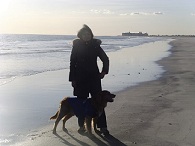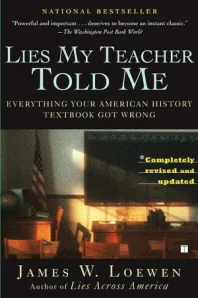 Belize is an ancient land, in many ways a land that time forgot. It is an empty land, haunted by the “bones” of a vanished Mayan Empire. Less than 300,000 mostly English-speaking people occupy this sparsely populated country. Although some have adopted a modern way of life; the Maya, Creole and mysterious Garifuna Indians are all connected in some way by the entangling threads of myth, magic and mysticism. Why did such and powerful and intellectually advanced society simply vanishes? Nobody knows the mystery of it. But their ghostly voices call to us from every corner of Belize. The cold stone of countless Ancient Temples speak volumes….if only we will listen.
Belize is an ancient land, in many ways a land that time forgot. It is an empty land, haunted by the “bones” of a vanished Mayan Empire. Less than 300,000 mostly English-speaking people occupy this sparsely populated country. Although some have adopted a modern way of life; the Maya, Creole and mysterious Garifuna Indians are all connected in some way by the entangling threads of myth, magic and mysticism. Why did such and powerful and intellectually advanced society simply vanishes? Nobody knows the mystery of it. But their ghostly voices call to us from every corner of Belize. The cold stone of countless Ancient Temples speak volumes….if only we will listen.
In the past, some historians claimed that when the British settlers came in the 17th century, Belize was uninhabited. But many Maya were still in Belize when the Europeans came in the sixteenth and seventeenth centuries. Archaeological and ethno historical research confirms that several groups of Mayan peoples lived in the area now known as Belize in the sixteenth century. These Maya whose advanced civilization reached its peak between the 7th and 9th centuries were expert farmers employing advance methods of agriculture such as terracing, tree cropping and using raised fields with drainage canals. They studied advanced astronomy, devised a precise calendar, used math based on the zero concept, built magnificent temples, palaces and ball courts which can be seen at Lamanai, Nim Li-Punit, Altun Ha, Xunantunich and Caracol. (Maya archaeological sites in Belize).
Fast forward to when English and Scottish buccaneers known as the Baymen first settled on the coast of Belize in 1638, seeking a sheltered region from which they could attack Spanish ships. The settlers turned to cutting logwood during the 18th century. The wood yielded a fixing agent for clothing dyes that was vital to the European woolen industry. The Spanish granted the British settlers the right to occupy the area and cut logwood in exchange for an end to piracy. In those days, work crews of slaves accompanied their owners to the logging camps in the interior of Belize. According to a 1790 census, 75 percent of the territory’s residents were slaves, 10 percent were whites, and the rest were free blacks. Ignored by the census were the Mayan Indian communities. Belize and Guatemala share the same Maya history. The Maya Indian Empire flourished in these lands for over 1,000 years before the Spanish came.However, while the Spanish settled and colonized Guatemala they only held sovereignty over Belize. The Spanish never settled Belize. The British did, and this fact changed the course of history for Belize.
Thus, Belize and Guatemala were developed into separate entities. Today, Belize’s society is ethnically diverse and culturally rich. The various groups include: the Creoles, Garinagu and Arawak Indians who came to Belize seeking safe haven from the oppression they were subjected to in the Caribbean and Central America. Although the Maya language group includes twenty diverse, but related, dialects, the Maya in the north speak Yucateco, those in the Toledo District speak Mopanero and Kekchi. Most Maya speak English along with their mother tongue, and mainly through long contact with the Spanish culture of Mexico and Guatemala speak Spanish also. Belizean Creoles are the descendants of slaves brought from Africa and the West Indies. Generally to be Creole means to have some African ancestry, but is now used primarily to identify non-Indian, non-mestizo ways of life, with a set of social values derived from the Anglo-Saxon countries. The masters taught the slaves the English language, so that the Belizean creole spoken became a version of English which has African words. Because of their colorful intermixture and having occupied the largest center of population in Belize, the Creole has perhaps adapted the most nationalistic attitude among cultural groups.
The story of the Garifuna begins in the early 1600’s on the Carribean island of St Vincent when West African slaves were brought on the island by the Spanish. The slaves who survived found shelter in the existing Carib Indians settlements and over the next century the two groups intermarried and eventually fused into a single culture, creating the Black Caribs or Garinagu culture, commonly referred to as Garifuna. Over the next 100 years, broken treaties, defeat and conflicts defined the beginnings of the Garifuna culture. The Garifuna were shipped from St Vincent to Roatan, Honduras, where barely 200 Garifuna survived to make the landing. Unfortunately, a civil rebellion forced many Garifuna to flee north to the shores of Belize. On November 19th, 1832, a large group of Garifuna landed on the coast of Belize at what is now considered one of the most important Garifuna settlements in the Caribbean. The site of their historic landing is the town of Dangriga which means “sweet running water” in Garifuna language. Garifuna Settlement Day is now celebrated annually on the 19th day of November to honor the arrival of Garifuna to the shores of Belize
Mestizos are the fastest-growing group in Belize and make up about half the population. These are persons of mixed European and Maya heritage, typically speaking Spanish as a first language and English as a second. More recently, many “Spanish” (as they’re often called in Belize) have moved from Guatemala or elsewhere in Central America. Mestizos are concentrated in Northern and Western Belize.
Other groups include several thousand Mennonites, sizable communities of East Indians, and Chinese, mostly from Taiwan and Hong Kong. Belize’s original white populations were English, but today’s “gringos” are mostly expats from the United States and Canada, with some from the United Kingdom. All these groups find in this tiny country a tolerant and amiable home.































Thanks for the history Zoom. I’ve always wanted to visit there.
I’ve heard people say that Belize is a very beautiful country with friendly people. Thank you for reading! 🙂
Thank you for the interesting cultural history! What a rich diverse land.